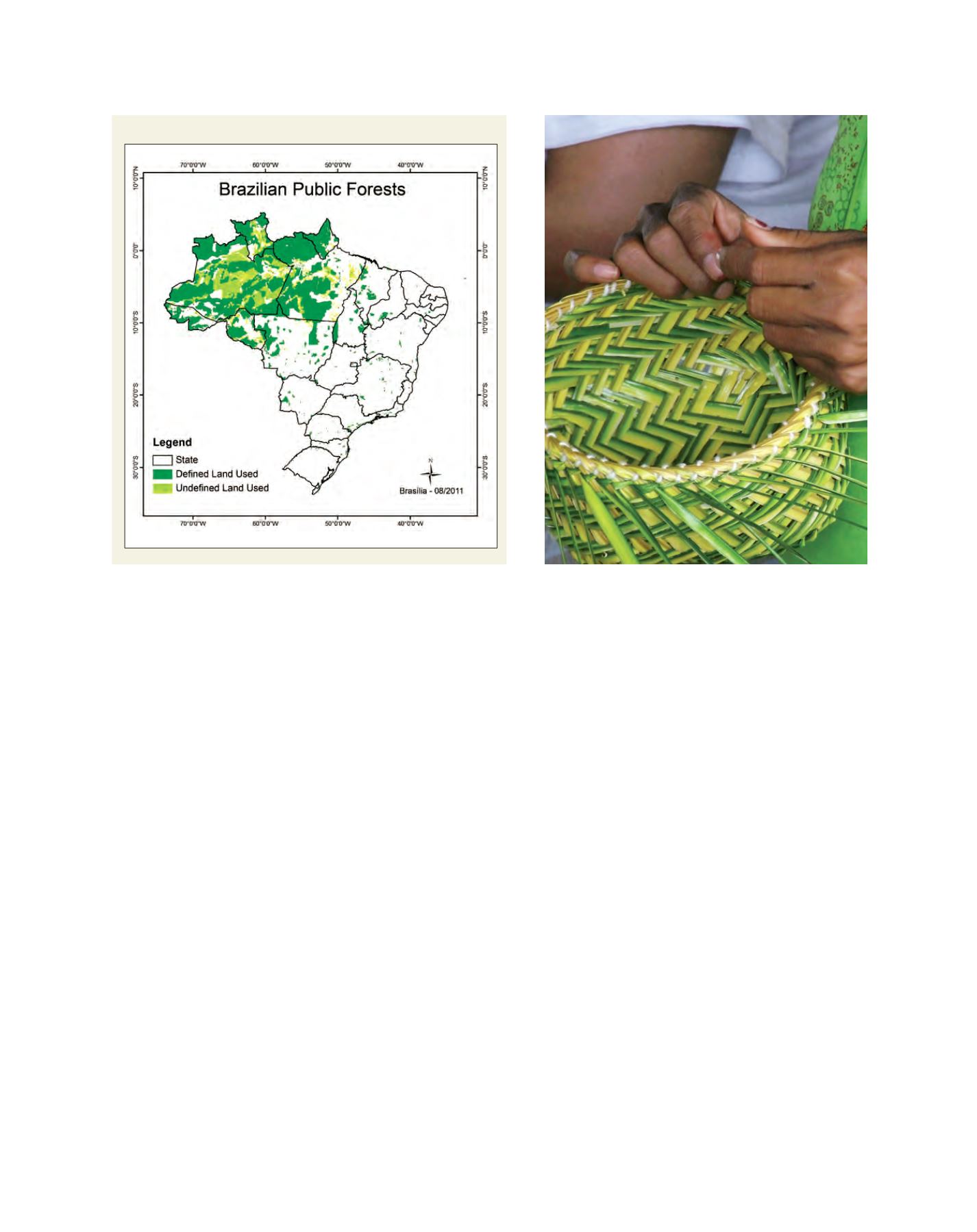

[
] 249
registered public forests in Brazil. Community public
forests shelter approximately 2 million people across
Brazil and play a significant social and economic role,
such as generating timber and non-timber forest prod-
ucts which are essential to its inhabitants. The Brazilian
Ministry for the Environment assists with the identi-
fication of those populations, promoting community
forest management by providing technical support and
capacity-building.
The National Plan for Promotion of Socio-
Biodiversity Product Chains (PNPSB)
PNPSB was launched in 2009 by the Brazilian
Government to provide an environment for the devel-
opment of specific work plans and the construction of
a strategic vision to promote and strengthen local and
regional production.
The first product chains selected to be worked were the
Brazilian-nut, in the Amazon biome; and the babaçu palm,
in the Transition Zone between the Amazon, Cerrado and
Caatinga biomes, mainly because of their environmental
and socio-economic importance. This strategy involves
representatives who operate at national and local levels
in order to strengthen the Brazilian socio-biodiversity
product chains to help produce sustainable markets.
Moreover, under the PNPSB, the Government
stepped up the purchases at the institutional market
in programmes such as the Food Acquisition Program
and the Brazilian National School Feeding Program
and also entered these products on the agenda of a
populations can be settled with the conservation of the natural
resources within.
National Forest Inventory
The main purpose of the National Forest Inventory (NFI) is to gener-
ate information on forest resources, both natural and plantations,
to support the formulation of public policies and projects aiming at
forest development, use and conservation. The NFI is nationwide
and multi-source, reporting information on forest resources in a
five-year measurement cycle. The sampling design for field data
collection is based on clustered sample plots distributed over a 20
km x 20 km grid. Simultaneously, with measurement of each plot,
interviews are conducted nearby with the aim of describing how
local communities view and use their available forest resources. The
NFI will provide information at country level for relevant themes,
including sustainable forest management, biodiversity, and biomass
carbon stocks.
The National Register of Public Forests (CNFP) is a geo-refer-
enced database of public land covered by forest (as at March 2006).
National Forests, Special Protected Areas, Indigenous Territories,
and many other types of public land with forests are included in
the register. The CNFP is an important instrument for identifying
potential public forests to be included in the forest concession plan-
ning as well as to identify the geographic position of the Forest
Management Units under concession for monitoring purposes.
Community forests are those legally used by traditional peoples
and communities, indigenous populations, domestic farmers, or
settlers of the national programme for agrarian reform. The differ-
ent types of community public forests altogether add up to 145
million hectares and represent 50 per cent of the total number of
Basketmaking by a Kaxinawa woman at Carapana Indigenous Territory
Image: MMA
Map of the distribution of Brazilian public forests
Source: Brazilian Forest Service/MMA
















